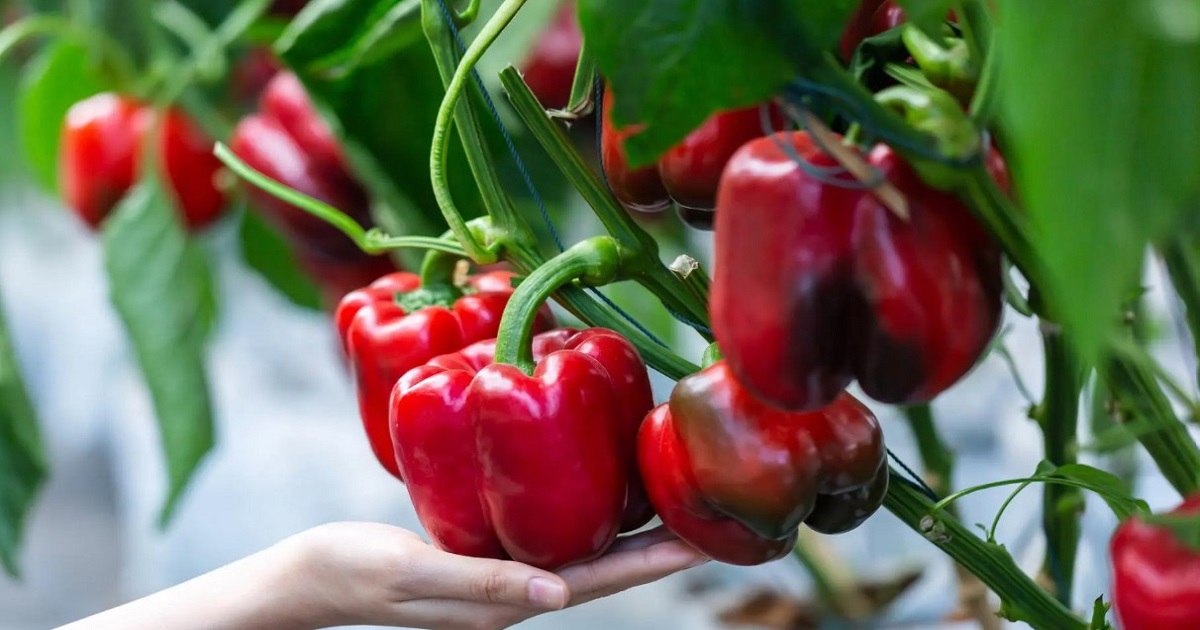How To Prune Pepper Plants For Better Harvests

source: freepik
Gardening is not just a hobby; it’s a way to connect with nature and enjoy the fruits of your labor. If you’re a pepper enthusiast, you’ll be thrilled to learn that pruning can significantly enhance the growth and productivity of your pepper plants. Pruning pepper plants is a simple yet effective technique that promotes healthier foliage, increased fruit production, and overall plant vigor. In this article, we’ll uncover the secrets to mastering the art of pruning peppers, including when and how to do it, to ensure a sensational harvest!
Why Should We Prune?
You might wonder, why bother pruning pepper plants when they seem to thrive without intervention? Well, the benefits of pruning are worth the effort! Pruning not only helps manage the plant’s size and shape but also allows better air circulation and sunlight penetration, reducing the risk of disease. By removing the lower leaves and side shoots, you can redirect the plant’s energy towards fruit development, leading to larger and tastier peppers. Pruning also encourages the growth of stronger stems, enabling the plant to support the weight of abundant harvests without bending or breaking.
When Should We Prune?
Timing is crucial when it comes to pruning pepper plants. It’s essential to understand the growth stages of peppers to ensure you prune at the right time. Wait until your pepper plants have reached a height of 8 to 12 inches and developed a sturdy stem. Typically, this occurs around four to six weeks after transplanting seedlings or when the plants have grown their first set of true leaves. Avoid pruning too early as it can hinder growth, and refrain from pruning after the flowering stage, as it may reduce fruit production.

How Should We Prune?
1. Topping: Begin by topping the main stem of your pepper plant. Using clean, sharp pruning shears, cut off the topmost 1 to 2 inches of the plant. This will encourage the plant to branch out and grow bushier, resulting in more flowers and peppers.
2. Suckering: As your pepper plants continue to grow, you’ll notice small shoots, known as suckers, emerging from the leaf axils. These suckers compete for the plant’s resources and can hinder fruit production. Carefully pinch off these side shoots using your fingers or pruning shears, being mindful not to damage the main stem or existing branches.
3. Leaf Removal: Once your pepper plants have a few sets of leaves, it’s time to remove the lower ones. These leaves tend to stay moist, creating an ideal environment for diseases. By eliminating them, you improve air circulation and minimize the risk of fungal infections.

4. Branch Thinning: If your pepper plant becomes too dense, selectively remove some of the interior branches to improve light penetration and air circulation. Remember to maintain a balanced structure to ensure the plant’s stability.
5. Pinch Young Plants: The more branches your pepper plant flaunts, the more potential it has for a fruitful extravaganza. And guess what? Encouraging those branches is a piece of cake. All you need to do is perform a little magic trick during the early stages of growth, right after planting. Trimming the top of the main stem triggers hormone release in the plant, promoting fresh growth and transforming it into two robust branches. It is best to perform this task early in the season to ensure a compact plant from the bottom, avoiding excessive top weight.

6. Remove Early Blooms: Removing blooms can actually boost yield. By sacrificing some early flowers, the plant’s energy can be focused on developing robust roots and stems, leading to better fruiting later on. This practice is only recommended during the initial weeks after planting to ensure proper establishment of the plants. Once established, the plants should have a strong root system that can support healthy fruit production from the remaining flowers throughout the season.

Pruning your pepper plants is an excellent way to boost their productivity and overall health. By implementing simple pruning techniques at the right time, you’ll enhance the quality and quantity of your pepper harvests. Remember to take care not to over-prune or damage the main stem while removing suckers or leaves. With a little practice and patience, you’ll master the art of pruning, and your pepper plants will reward you with a sensational harvest that’s sure to spice up your meals! So, grab your pruning shears, get out in the garden, and enjoy the abundant rewards of your green-thumb endeavors!